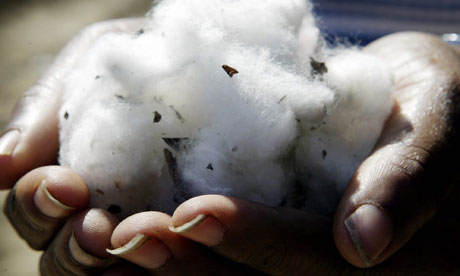Commenting on research from China into Bt cotton Emma Hockridge, head of policy at the Soil Association, said:

“Encouraging predator insects is crucial to managing crop pests sustainably – indeed, that’s how organic farmers avoid pesticides, using natural processes to encourage beneficial predators.
“This study finds that Bt cotton is a better habitat for such predators than cotton that has been sprayed with pesticides. What it doesn’t cover is other recent research in China that has discovered increased insect resistance and increased numbers of pests developing in and around these GM cotton crops.
“Studies show problems occurring with secondary pests in Bt cotton, which are not only affecting the cotton but also damaging surrounding crops. This suggests ‘spillover’ problems rather than ‘spillover’ benefits. Taking an organic approach to encouraging predators avoids this problem.”
This new research states that “critical concerns about the ecological risk assessment of transgenic crops still remain, especially at the large scale.” A number of studies which have been carried out on Bt cotton in China have shown significant problems in terms of pest resistance and increased use of pesticides:
According to a study published in the journal Environmental Management and Change in 2011, a substantial number of farmers in three-cotton producing regions in China have reported that secondary pests have increased since they adopted the use of Bt cotton which is genetically engineered to resist pests such as the bollworm. This is consistent with the scientific literature, which suggests that secondary pests are likely to increase over time. The study also found that the reduction of pesticides use has been lower than reported elsewhere, suggesting that more pesticides are needed to combat emerging secondary pests. Thus, the benefit of growing Bt cotton to reduce pesticides use diminishes in the longer term. [1]
In 2010, field studies revealed a significant increase in pest numbers around farms growing modified strains of cotton. Millions of hectares of farmland in northern China have been struck by infestations of bugs following the widespread adoption of Bt cotton. Outbreaks of mirid bugs, which can devastate around 200 varieties of fruit, vegetable and corn crops, have risen dramatically in the past decade, as cotton farmers have shifted from traditional cotton crops to GM varieties. [2]
In 2008 a study published in the International Journal of Biotechnology, which drew on field data collected in China, indicated that the apparent financial benefits of Bt cotton had been more or less completely eroded by the increasing use of pesticides by Bt farmers in their battle to control secondary pests. [3]
In 2006 a study jointly conducted by the Centre for Chinese Agricultural Policy, the Chinese Academy of Science, and Cornell University showed that the profits Chinese cotton farmers had received for several years by saving on pesticides by using Bt cotton were eroded by the fact that other pests were attacking the GM cotton. Populations of other insects – such as mirids – increased so much that farmers had to spray their crops up to 20-times a growing season to control them, according to the study of 481 Chinese farmers in five major cotton-producing provinces. [4]
[1] (2011) http://www.springerlink.com/content/rj34j3v323423086/
[2] (2010) http://www.nature.com/news/2010/100513/full/news.2010.242.html
[3] (2008) http://www.inderscience.com/offer.php?id=18348
[4] (2006) http://www.news.cornell.edu/stories/July06/Bt.cotton.China.ssl.html














